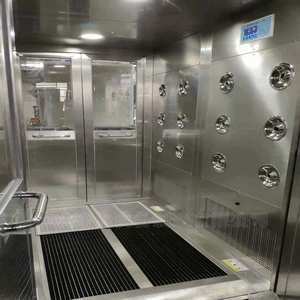🗣 SL提问: 实验室ai设计
✍️ Ai批改: A laboratory AI (Artificial Intelligence) design refers to the creation of artificial intelligence systems that are specifically tailored for use in laboratory settings, such as research institutions, universities, and industrial labs、These AI systems are designed to assist scientists, researchers, and engineers in various tasks, including data analysis, experiment design, and decision-making、Here's an overview of laboratory AI design:
Goals and Objectives:
The primary goals of laboratory AI design are to:
1、Improve research efficiency: Automate routine tasks, such as data cleaning and organization, to free up researchers' time for more strategic and creative work.
2、Enhance data analysis: Develop AI algorithms that can quickly and accurately analyze large datasets, identify patterns, and provide insights that may have gone unnoticed by human researchers.
3、Support experiment design: Use AI to optimize experiment design, predict outcomes, and identify the most promising areas of research.
4、Facilitate collaboration: Design AI systems that can facilitate collaboration among researchers, engineers, and scientists by providing a common platform for data sharing, analysis, and discussion.
Key Components:
A laboratory AI design typically consists of the following components:
1、Data Management: A data management system that can collect, store, and organize large amounts of data from various sources, such as instruments, sensors, and experiments.
2、Machine Learning: Machine learning algorithms that can analyze data, identify patterns, and make predictions or recommendations.
3、Automation: Automation tools that can perform repetitive tasks, such as data cleaning, formatting, and reporting.
4、Visualization: Data visualization tools that can help researchers understand complex data and identify trends and patterns.
5、User Interface: An intuitive user interface that allows researchers to interact with the AI system, input data, and retrieve results.
Applications:
Laboratory AI designs have a wide range of applications across various fields, including:
1、Drug Discovery: AI can help identify potential drug candidates, predict their efficacy, and optimize clinical trials.
2、Materials Science: AI can help design and optimize materials with specific properties, such as strength, conductivity, or optical properties.
3、Genomics: AI can help analyze genomic data, identify genetic variants, and predict gene function.
4、Chemical Synthesis: AI can help design and optimize chemical synthesis routes, predict reaction outcomes, and identify potential hazards.
Benefits:
The benefits of laboratory AI design include:
1、Increased Efficiency: Automation of routine tasks and improved data analysis capabilities.
2、Improved Accuracy: AI can reduce errors and improve the accuracy of data analysis and interpretation.
3、Enhanced Collaboration: AI can facilitate collaboration among researchers by providing a common platform for data sharing and analysis.
4、Innovation: AI can help identify new research directions, predict outcomes, and optimize experiment design.
Challenges:
Despite the benefits, laboratory AI design also faces several challenges, including:
1、Data Quality: AI requires high-quality data to produce accurate results.
2、Interpretability: AI models can be difficult to interpret, making it challenging to understand the reasoning behind their predictions.
3、Integration: Integrating AI systems with existing laboratory infrastructure and workflows can be challenging.
4、Regulatory Compliance: AI systems must comply with relevant regulations, such as those related to data protection and intellectual property.
Design Considerations:
When designing a laboratory AI system, consider the following:
1、Domain Expertise: Collaborate with domain experts to ensure that the AI system is tailored to the specific needs of the laboratory.
2、Data Governance: Establish clear data governance policies to ensure data quality, security, and compliance with regulations.
3、Scalability: Design the AI system to scale with the growing needs of the laboratory.
4、User Experience: Develop an intuitive user interface that is easy to use and understand.
Tools and Technologies:
Some popular tools and technologies used in laboratory AI design include:
1、Python libraries: scikit-learn, TensorFlow, and PyTorch for machine learning and data analysis.
2、Data management platforms: Laboratory information management systems (LIMS), electronic lab notebooks (ELNs), and data lakes.
3、Cloud computing: Cloud-based infrastructure for scalability, flexibility, and cost-effectiveness.
4、Specialized hardware: Graphics processing units (GPUs), tensor processing units (TPUs), and field-programmable gate arrays (FPGAs) for accelerating AI computations.
By considering these factors, laboratory AI design can help researchers and scientists accelerate their work, improve efficiency, and make new discoveries.
0
IP地址: 252.16.92.155
搜索次数: 2716
提问时间: 2025-04-20 07:41:04
❓️ 热门提问:
南方红利低波50ETF联接A
怎么查看网络域名
ai的标音
正规炒伦敦金平台
2今日金价多少一克
后扩底膨胀螺丝
黄金钻戒哪个品牌好
ai线上学校
镀铑白k金
白条金条有什么区别
豌豆Ai站群搜索引擎系统
🤝 关于我们:
三乐Ai
作文批改
英语分析
在线翻译
拍照识图
Ai提问
英语培训
本站流量
联系我们

📢 温馨提示:本站所有问答由Ai自动创作,内容仅供参考,若有误差请用“联系”里面信息通知我们人工修改或删除。
👉 技术支持:本站由豌豆Ai提供技术支持,使用的最新版:《豌豆Ai站群搜索引擎系统 V.25.05.20》搭建本站。
















